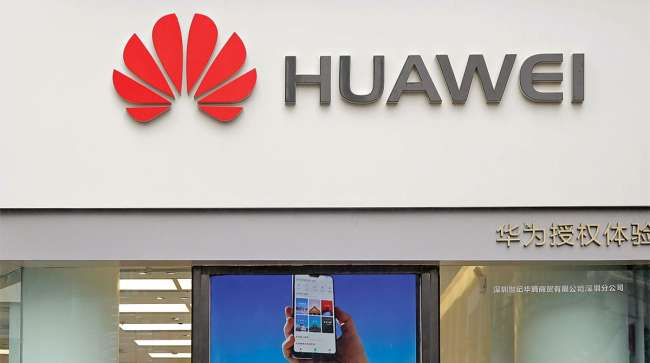Senior Reporter
Carriers Must Prepare as Deadline Nears for Chinese Technology Ban, Experts Say

[Stay on top of transportation news: Get TTNews in your inbox.]
With an Aug. 13 deadline approaching fast, motor carriers who do business with the federal government must soon launch an inquiry to locate and purge telecommunications equipment manufactured by five Chinese companies that may be in use in their operations.
Against this countdown, American Trucking Associations’ Government Freight Conference on Aug. 4 conducted a webinar to help carriers understand their obligations under this provision — included in the fiscal year 2019 Defense Authorization bill — aimed at eliminating potential national security threats contained in Chinese systems ranging from cameras and cell phones to GPS products and computer routers.
Despite pressure from business trade associations and the Department of Defense, Congress is unlikely to extend the deadline, said Harold “Buzz” Bailey, an attorney with Bailey FedK Consulting, during the webinar.

Transport Topics introduces its newest digital interview series, Newsmakers, aimed at helping leaders in trucking and freight transportation navigate turbulent times. Audience members will gain access to the industry's leading expert in their particular field and the thoughtful moderation of a Transport Topics journalist. Our second episode — "The Evolution of Electric Trucks" — featured Nikola founder and executive chairman Trevor Milton. To view the replay, complete this form.
The Chinese companies, believed to be potential hackers into U.S. intelligence and defense agencies’ information systems, include Huawei, ZTE Corp., Hytera, Hikvision and Dahua Technology. The provision also covers any subsidiary or affiliate of the entities.
Despite industry questions that stretch from how the government will enforce the requirement to what components actually are covered by the mandate, the onus will be on truckers to find and rid their technology systems of the prohibited products. But experts warn that the technologies targeted could be very difficult to locate in complex modern corporate technologies.
“I think we’re all catching on to what an incredibly potent statute, Sec. 889 of the 2019 National Defense Authorization Act is,” said Bill Wanamaker, executive director of ATA’s Government Freight Conference. “As a carrier or broker, how do you know whether any of this covered technology is in your electronic inventory.”

Wanamaker
Bailey said the law incorporates “essential” or “substantial” components of covered equipment, including microelectronic components that route data even if the components aren’t connected to the internet. “Most telecommunication equipment OEMs can’t ‘fix’ their components to make them Sec. 889 compliant — you have to buy new ‘NDAA-compliant’ equipment,” Bailey said.
Bailey listed several points that carriers must know:
- Government contractors are not required to do an audit of suppliers, only a “reasonable inquiry” of available documents on their equipment purchases.
- Contractors should consider a review of records on equipment purchases. Do the records show the equipment is manufactured by an OEM, distributor or installer? Carriers and brokers need to know essential components from an OEM are not those in question.
- If a trucking company has done a reasonable inquiry of its own purchasing records, and has not received complete answers to the supplier survey, then it can reply “no” to Part 2 of Sec. 889.
- Carriers must stretch their inquiries to distributors/installers. These companies must also contact OEMs about essential components.
Despite congressional reluctance, Bailey encouraged carriers to contact their congressional delegation to request a delay in the Aug. 13 deadline. Dozens of businesses already have pressured Congress to delay the deadline by one year, but so far have had no success.
Section 889 Compliance by Transport Topics on Scribd
Meantime, Bailey noted that conversations are ongoing about whether equipment manufacturers will offer lists of compliant products. “If your existing equipment is not on the list, then it’s probably not compliant,” Bailey said to webinar attendees. “This could lead to an expensive ‘rip and replace.’ The government may not mount aggressive enforcement early on, but they may look to make an example of a company blatantly misrepresenting use of covered equipment. There is a waiver process available, but that process will take time and money. It’s best to discuss waivers with government customers sooner rather than later.”
Bailey added, “The real insidious part of this is that it’s a marketing opportunity for a lot of companies. That’s what really worries me, because these companies would normally say, ‘you’re going too far, government, you shouldn’t cover this and you shouldn’t cover that.’ But the equipment providers are just as happy.”
Want more news? Listen to today's daily briefing:
Subscribe: Apple Podcasts | Spotify | Amazon Alexa | Google Assistant | More




